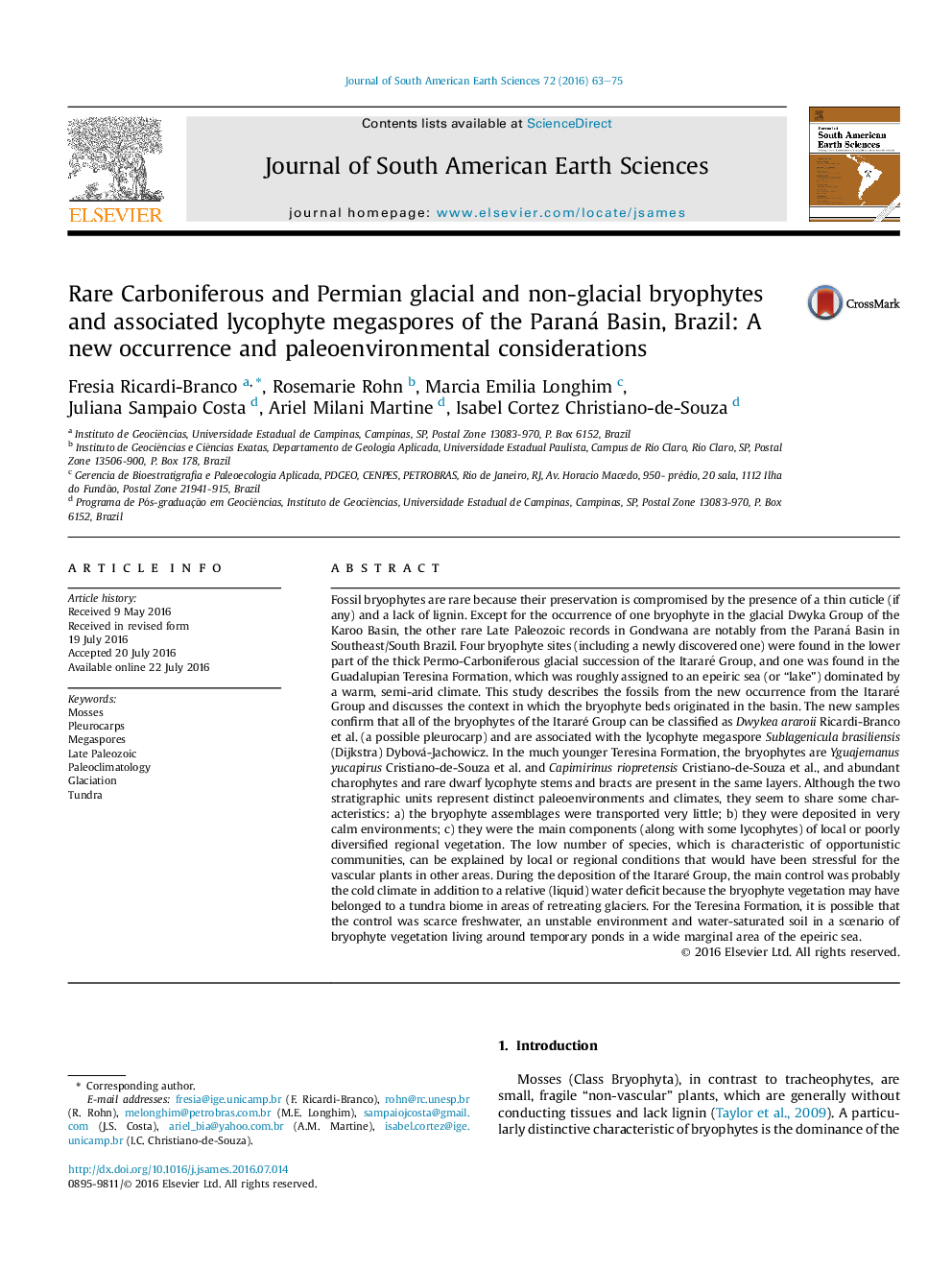| کد مقاله | کد نشریه | سال انتشار | مقاله انگلیسی | نسخه تمام متن |
|---|---|---|---|---|
| 4681953 | 1635138 | 2016 | 13 صفحه PDF | دانلود رایگان |
• Bryophytes of the Itararé Group belonged to a tundra biome of retreating glaciers.
• Rare proglacial bryophytes related to the Carboniferous-Permian Gondwanic Glaciation.
• Opportunistic Late Paleozoic bryophyte communities associated to stressful environments.
Fossil bryophytes are rare because their preservation is compromised by the presence of a thin cuticle (if any) and a lack of lignin. Except for the occurrence of one bryophyte in the glacial Dwyka Group of the Karoo Basin, the other rare Late Paleozoic records in Gondwana are notably from the Paraná Basin in Southeast/South Brazil. Four bryophyte sites (including a newly discovered one) were found in the lower part of the thick Permo-Carboniferous glacial succession of the Itararé Group, and one was found in the Guadalupian Teresina Formation, which was roughly assigned to an epeiric sea (or “lake”) dominated by a warm, semi-arid climate. This study describes the fossils from the new occurrence from the Itararé Group and discusses the context in which the bryophyte beds originated in the basin. The new samples confirm that all of the bryophytes of the Itararé Group can be classified as Dwykea araroii Ricardi-Branco et al. (a possible pleurocarp) and are associated with the lycophyte megaspore Sublagenicula brasiliensis (Dijkstra) Dybová-Jachowicz. In the much younger Teresina Formation, the bryophytes are Yguajemanus yucapirus Cristiano-de-Souza et al. and Capimirinus riopretensis Cristiano-de-Souza et al., and abundant charophytes and rare dwarf lycophyte stems and bracts are present in the same layers. Although the two stratigraphic units represent distinct paleoenvironments and climates, they seem to share some characteristics: a) the bryophyte assemblages were transported very little; b) they were deposited in very calm environments; c) they were the main components (along with some lycophytes) of local or poorly diversified regional vegetation. The low number of species, which is characteristic of opportunistic communities, can be explained by local or regional conditions that would have been stressful for the vascular plants in other areas. During the deposition of the Itararé Group, the main control was probably the cold climate in addition to a relative (liquid) water deficit because the bryophyte vegetation may have belonged to a tundra biome in areas of retreating glaciers. For the Teresina Formation, it is possible that the control was scarce freshwater, an unstable environment and water-saturated soil in a scenario of bryophyte vegetation living around temporary ponds in a wide marginal area of the epeiric sea.
Figure optionsDownload as PowerPoint slide
Journal: Journal of South American Earth Sciences - Volume 72, December 2016, Pages 63–75
